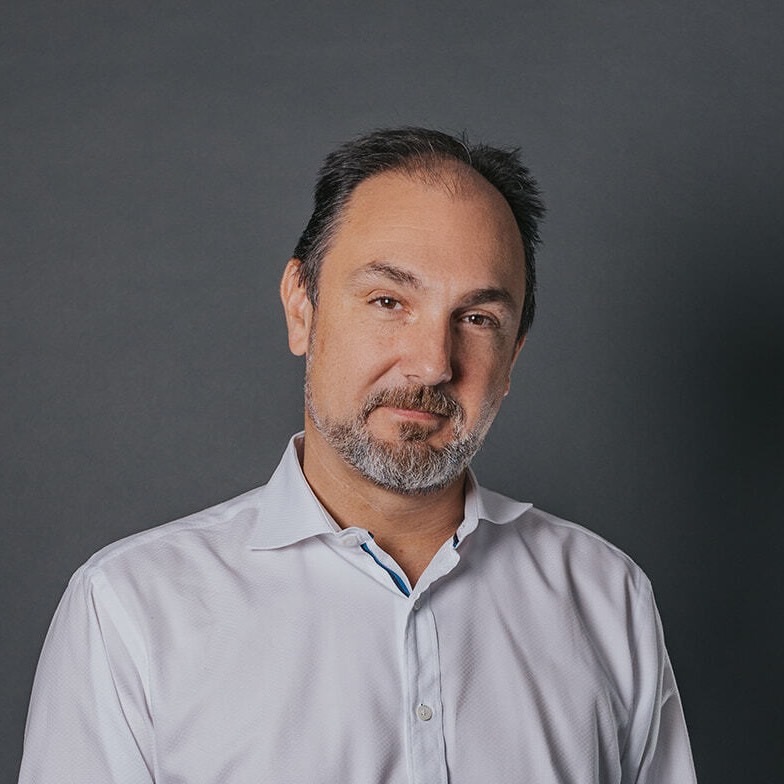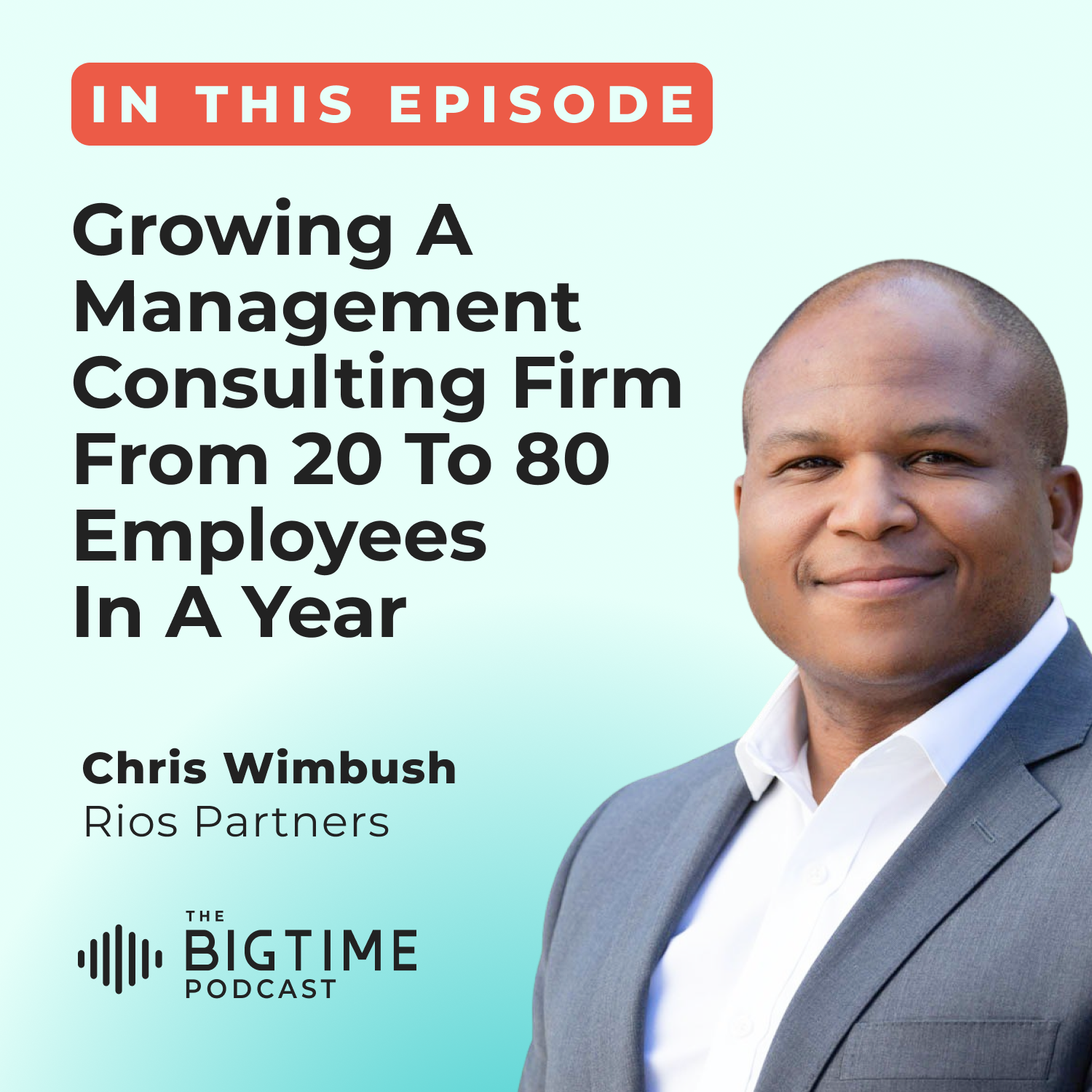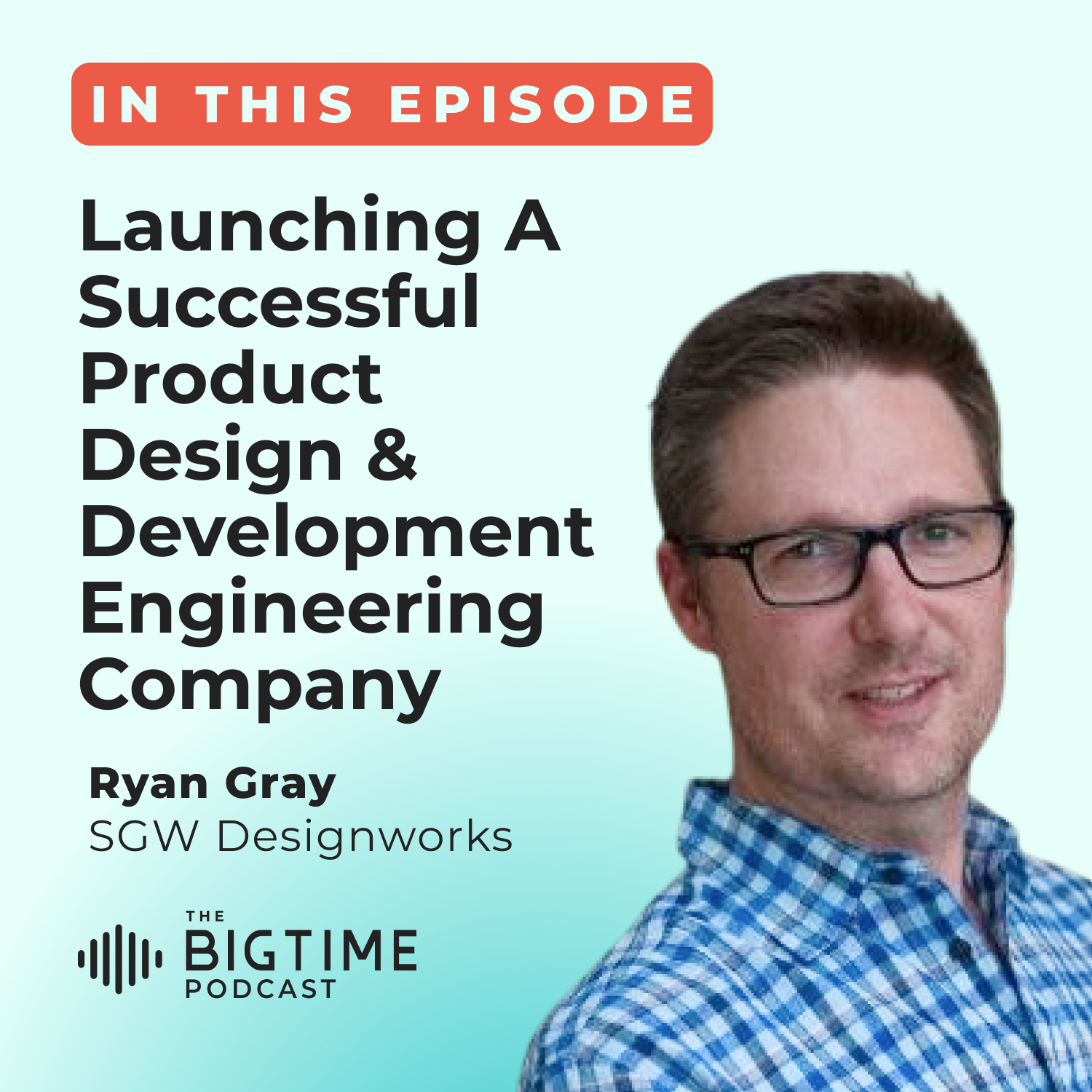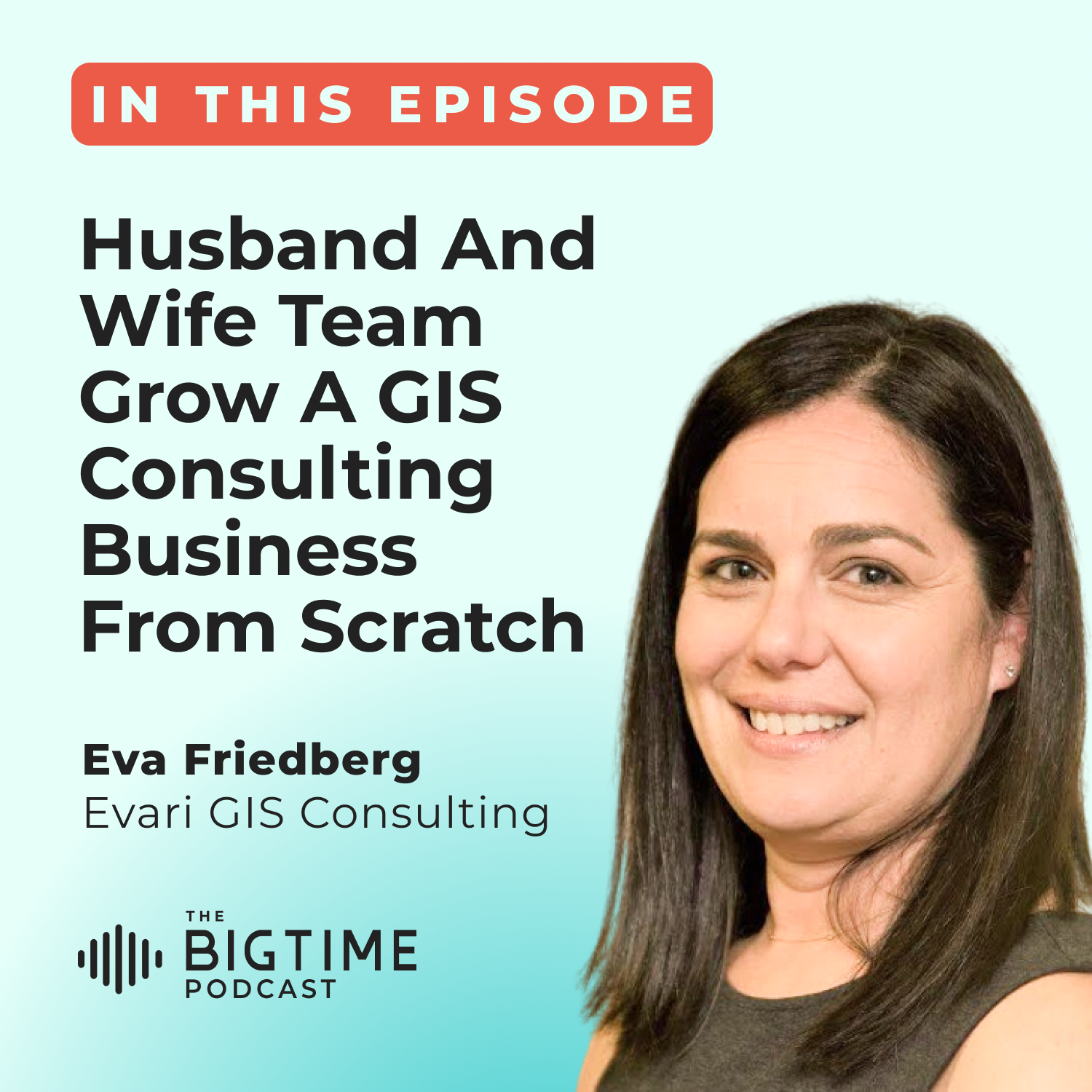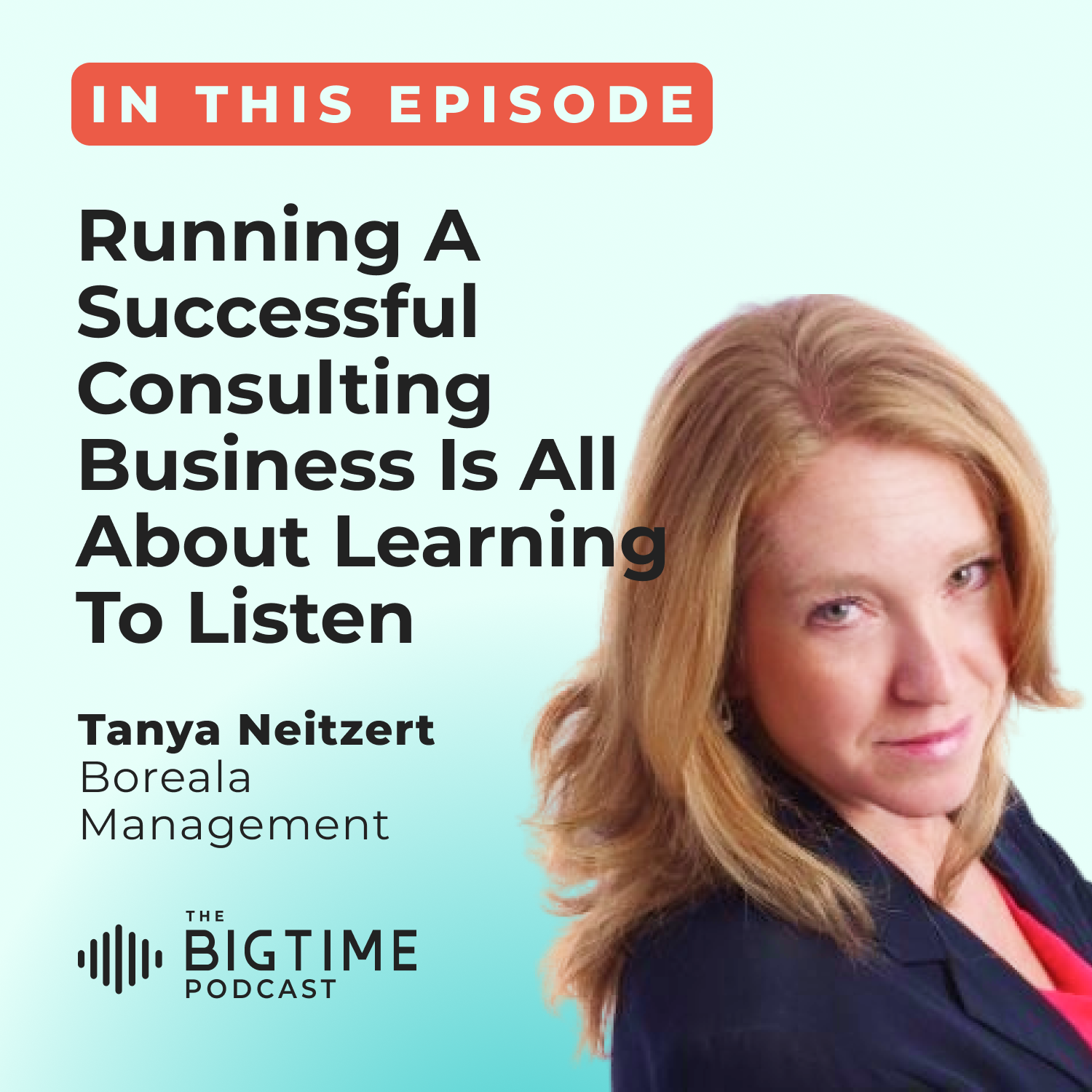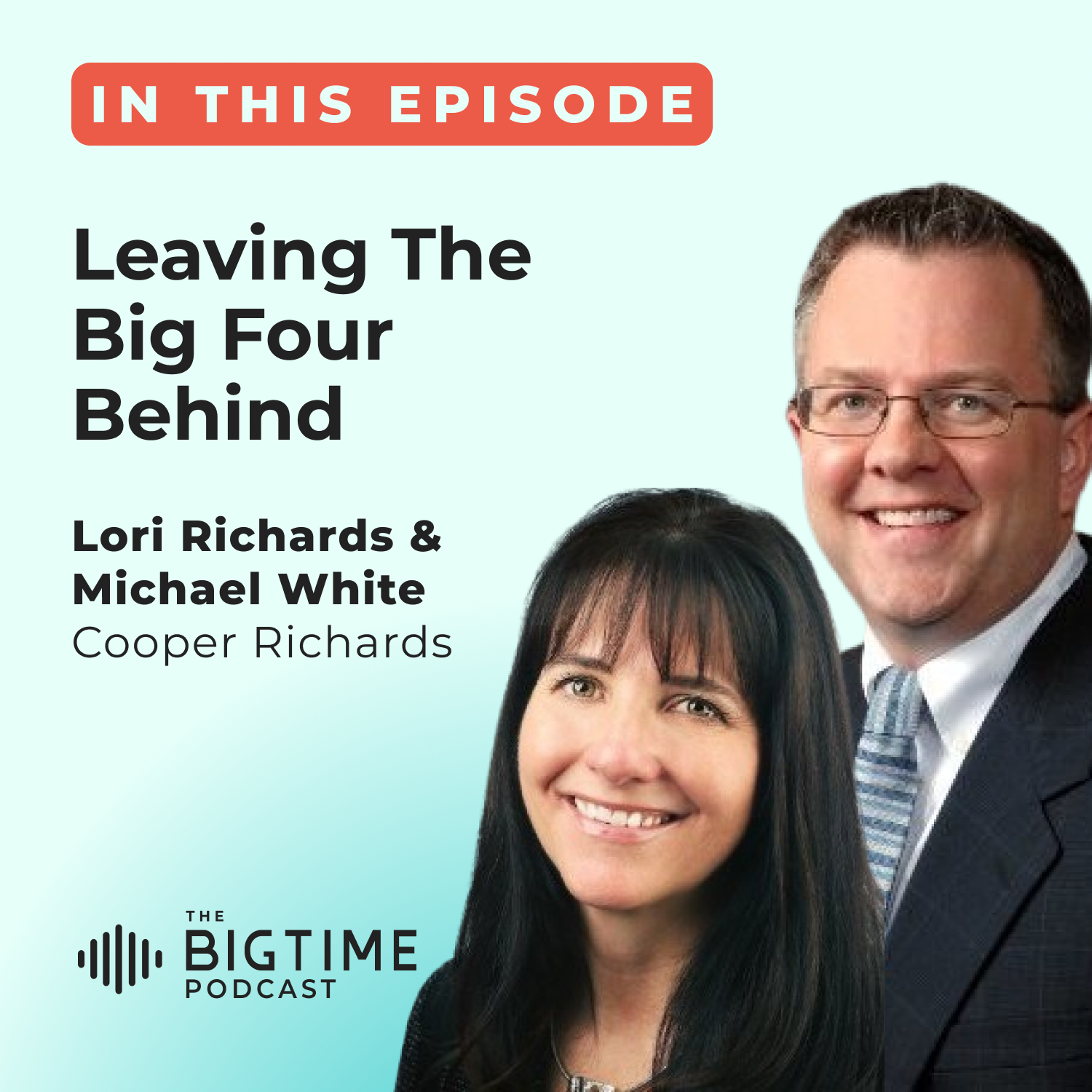Growing a Professional Services Firm — Welcome to the BigTime Podcast
- 0.5
- 1
- 1.25
- 1.5
- 1.75
- 2
Brian Saunders: See, you want your team walking in prepped, like, " We've done this 14 times already. Let's go do it a 15th time." We've worked out the kinks, right? That's not the way PS works for everybody.
Announcer: Welcome to the BigTime Podcast, where we have honest conversations with industry professionals who have advice that's right for you.
Alexander: Welcome to the first episode of the BigTime Podcast. I'm your host, Alexander. Today on our first episode, I'm joined by Brian Saunders, CEO and founder of BigTime Software. Welcome, Brian.
Brian Saunders: Thanks. I appreciate you having me. I'm excited about it.
Alexander: Now, this is just our first episode. There's nine more that you get to look forward to in this first season of the BigTime Podcast. You'll be hearing from leaders of firms in professional service firms across North America, with teams of just 10 people to hundreds. The goal of this podcast is to spark honest conversations around growth. Now, Brian, I want to start off asking you, though, why did you decide to start this podcast? What was your purpose behind it?
Brian Saunders: Yeah, it's a good question. We've been doing this for about 20 years, and working with professional services firms across the spectrum. You know, engineers, architects, IT services consultants, people in security, people in all sorts of different walks of life, but all of them with one common thread, which is they need to bill their time, and the most important asset is the people. They need to figure out how to get better yield out of the people that they're working with. It's not just how do I make people better consultants. It's also how do I convert that into valuable work for customers. Over the course of that 20 years or so, what we see start to emerge are these patterns where successful firms, firms that grow, firms that continue to get bigger and bigger client accounts and move up in their market, they all follow a similar set of patterns. We thought, " All right. Well, let's start to help people understand what those look like, and let's approach everybody where they're at." If you're 10 users, life is going to be different than if you're 100. If you're 100 consultants, life is going to be different than if you're 200, right? The more we can dig into where you're at and what the next bend in that growth curve looks like, the more successful you'll be as an organization. We thought, " All right, well, let's start with a podcast."
Alexander: I've been fascinated with hearing all these insights of these other episodes, which you'll get to hear very soon. It's interesting to see the similarities, but also some of the differences based off that size as you described. Now, you've had an intimate experience yourself before BigTime. Can you help me understand what led up to forming BigTime and the purpose of it?
Brian Saunders: Yeah, that's a great question, so the origin story. I grew up in the'90s doing product consulting, before that was a thing. We would come into a software company at the time, or even a Fortune 500 company who wants to produce software, and they would have a market and we would try to figure out how to get the software to fit and appeal to that market. Or late'90s, we would come in. Boards would bring us in for startups and they'd say, " Hey, look, we've got a product. We thought it was this market. It doesn't fit. What do we need to shift in either one in order to get the two to work together?" That's a thumbnail sketch of what we did at DaVinci back in the'90s. The interesting piece of that puzzle is, ignoring the work we did, the most interesting part of that experience for me was watching the firm grow. We started with four or five people, and we grew up to 10 and 20 and 50. I think we exited at 80 or 90 consultants, and into an organization that had several hundred. Each of those steps along the way, all of the patterns we learned about how to grow that type of firm, we learned in the rearview mirror. My partner used to say we learned everything through brute experience, which sounds funny, but in reality it's just really painful. One of the motivators behind starting BigTime was really twofold. The first one was that as a product consultant, I got tired of having people follow steps one and two and skip three and four, and expect that five would magically appear. To some extent I wanted to eat my own dog food, create a product, address a market, that whole business. Beyond that, I thought, " All right, well, there's really nothing out there," in the early 2000s, " for people in the mid- market, growing professional services firms, 10, 20, 50, 150 users. That doesn't really exist," or didn't exist as a product at the time. I really wanted to take some of these lessons learned and instill it into a product that would help other people avoid the mistakes that we made. That was the motivation. As we got into it, suddenly the ability to get professional services firms into the cloud became paramount. PS firms change a lot more quickly as it relates to remote work. Everything we deliver is in a PDF or knowledge. We don't pallet anything, like we have warehouses somewhere with all our stuff. It's basically knowledge that we're imparting and nothing else, so it lends itself well to this cloud- based infrastructure where you can keep track of all your client data and all your interactions. Then more importantly, you can flip the lens and see how your individual consultants are doing and how to help them excel as well.
Alexander: I look forward to listening to Enrico Schaefer from Traverse Legal. He actually shared how he really looks at using technology to propel him further. A lot of good conversations coming up, so that's just a taste of it. There's a couple main categories that we try to cover, though, in each of the episodes. This one, though, our kickoff, Brian, I'm going to ask you a few thoughts of your lessons learned. There's a couple main themes, though. Staff hiring, so how do you find people, how do you train them, how do you bring on the right team. Project, how manage it well and manage the team that are managing the projects, and then service. How do you make sure you're providing a good service that people want to keep coming back to, handling maybe the difficult clients that require a lot or desire a lot and their expectations maybe are unbalanced, and then brand. How do you build a brand that lasts? Those are the main categories.
Brian Saunders: What's interesting is you kind of have to think about those at every stage of growth, right? Throwing these all over the place, but really we try to think about... and BigTime is structured this way internally, not because it changes markedly the metrics that we look at, but our team has to approach the companies that we address. Our sales team, our marketing team, our support and success team, we have to approach the companies we service where they're at. If you're a 10- person organization just struggling to deliver client work, we've got to focus on that project management piece of the triangle. Let's make sure that everything is repeatable. Let's make sure we don't walk into every new project with a new customer and it's like happy birthday, that Frosty the Snowman moment where he wakes up and doesn't realize. " Oh, have I done this before?" You want your team walking in prepped, like, " We've done this 14 times already. Let's go do it a 15th time." We've worked out the kinks, right? That's not the way PS works for everybody.
Alexander: If you go back to your memory of when you were running your firm...
Brian Saunders: I'm an old man. It might take us a minute.
Alexander: ...and you think about one of the things as you grow is being able to have indicators when a project isn't going right, any lessons learned of maybe sometimes when it didn't work well, and you got a realization of, " Okay, we need to do this differently"?
Brian Saunders: Sure. Now we're down to, okay, look, there's two sides to the coin, right? A firm is a collection of staff. It's a collection of human beings who produce project work. I will say, 20 years from now when you look back at your successful consulting career and you've built a huge organization, you will likely not remember a lot of the gigs. You won't remember the clients. You won't remember the stuff you produced. You'll remember the people that you raised up in your firm and the people who helped you be more successful. You're going to remember those relationships. That side of the coin is super important, but the side you're talking about is the one that produces money for us. In order to collect from a customer, I need to deliver on time and on budget. That's what I'm trying to get to. If you go back to traditional project management, that triangle that everybody talks about, I have budget, features and schedule, and it needs to form this perfect, balanced triangle. As soon as you drag schedule over here, all right, well, either budget or scope has to give, and that's a conversation with the client, right? That's not you deciding arbitrarily. Now, minor changes, we decide those things arbitrarily all the time. We just take a minor shortcut in order to hit a number, or maybe we work a little harder. What we're actually doing is increasing the budget by forcing our people to work on Saturday in order to deliver on time. We're owning that piece of the budget. The key to doing that successfully as a project manager, you can often rely on that type of heroic, but you can't do it all the time.
Alexander: Brian, you pack so much insight into a short amount of time, folks may want to go back and relisten to all the different pieces.
Brian Saunders: Sorry. I just talk fast.
Alexander: You're just packing it. One key piece that hit home, based off of the other conversations that we've already been having within the other nine episodes, is you slowly take a step back and you realize you need to start paying attention to the pipeline and seeing the metrics. The metrics, there's similarities, but some are a little different depending on your firm. I've been fascinated, as I've been hearing and you'll also hear... just another plug for the upcoming episodes... of how people look. Okay, some look at this particular metric and others look at this, and it's based on your firm. That's what allows you to know is it growing, is it not, and then you can jump back into the weeds if you need to.
Brian Saunders: Yeah. You know, that's the conversation. I spend a lot of time, a fair amount of time, talking with people who are leading businesses in my client base. I don't talk with them like, " How are you doing." I talk with them because, " We are trying to figure out why we're struggling with X," whatever X happens to be. " All of our projects are over budget," or, " We can't seem to get a consistent rhythm to this," or, " We're really struggling with figuring out the tail on projects, and then we end up pushing off new projects because we can't quite get people out of the old ones." Like, " How do I know when to quit a client project? How's that work?" The questions that I have with them are driven by those metrics, like, " Okay, so tell me about utilization. Where are you at? What does bench time look like? What do you have them doing? Okay, so tell me about the training. How long does it take you to get somebody new up and running? What about intro to a new project? What's the timeline on that?" We start to talk through these metrics that exist in their firm, and that helps provide the insights that I need to say, " Okay, here's what I think the pattern is for whatever the problem is." Now, I might be wrong, and frequently am. It's the curse of being old, but at least we point them in the right direction, like where to look. If I don't know the metrics, great. Well, okay, let's go measure that then. Let's pick the projects. Let's figure it out. Let's figure out how much you're actually investing. What does that actually look like, because maybe that's a normal tail. Maybe you should plan on 5%, because that's not a big deal. By the way, if you plan on 5%, the dirty little secret... or maybe the piece of gold that's somewhere in your interviews... is when you get to about 50, 60 consultants, close to 60 or 70% of your new business comes from existing clients, repeat business. If that's the case, then how are you mining for that new business while you're completing the existing project? What does that look like? How do you lead that client quickly to value, so that they kick off the next project before you even finish this last one? Now the client's motivated to close out that last project, because I've got to get to the new piece of value. If I can marry those two effectively... and it's always a struggle... but if I can marry those effectively, I just solved my problem with more revenue, which is a win- win. That type of conversation only comes from being distanced enough from the day- to- day that you can afford to dig into the metrics like a solid CFO would do.
Alexander: It's these strategies, the tactics, that allow you to realize, " Oh, wow, there's an opportunity over here," but it comes through conversations. Conversations seem to be the unlocking in many ways, and that's what we're hoping with the BigTime Podcast. Through these conversations, it can maybe unlock some new ideas, new perspectives. Again, there's four categories that we're covering of staff, projects, service and brand. Those are the four different types of areas of questions we dig into in each one. Now, everyone that we've interviewed, you'll hear in the next nine episodes, they're in different roles. Some are founders, others are leaders of different departments, so not all of them actually answer all four of them.
Brian Saunders: It is important to realize that that big- picture thinking, that, " How do I help the firm grow," that is not only the owner thinking that way. You get the whole organization thinking that way, whether you're managing consulting or you're director- level or you're the CEO of the organization. I love that you're talking to different members within the leadership team of those organizations, just to get a feel for how they're affecting that and how they're thinking about it.
Alexander: Brian, is there a closing thought here? Is there a word of wisdom or maybe a quote that you take with you that allows you to lead and motivate, and that you could share? Something that comes to your mind that helps you in your direction and would help other professionals.
Brian Saunders: I don't know that I think about things that way. In other words, I don't look at inspirational quotes, necessarily, for business. That, again, it's just because I'm old and jaded. I probably should have it. I do think that there's a tendency to believe that as you move up in management, you get distant from the detail in your job, like a spreadsheet to the number. I think knowing when to deploy that tool versus knowing when to roll up your sleeves, there's the difference between. Think about it. You know, you're in the huddle in some football game, and you just got jackhammered and now you're back to call the next play. Everybody comes back to the huddle and somebody says, " You know, we should really work on our blocking, because I feel like if we could upblock better, a lot of these guys come over the top. Maybe we should... " " Shut up. We're in the battle. Our gig is not the talk process right now. Our gig is to try to figure out how to get the next yard. Talk process when we do the review after the game." I think there's a certain nuance there for truly great leaders in this business, and probably in any business, to know when are you in the battle, and when are you taking a step back and looking at how you fight, how you win, and getting better in practice. It's funny, because business is different than sports, right? Sports, you have more practice than games, and in business you have more games than practices, right? You need those moments where you can get together as an organization and say, " Okay, let's take a pause. I know we did a lot of great client work this quarter, but let's go back and look at the numbers that overarch that client work. Let's see if the numbers tell us anything about how we might be able to get better." Maybe it's training. Maybe it's project management. Maybe it's communicating the budget to the line staff better. Somewhere in there is a little gold nugget in your data that tells you what's the key to the next yard, and that next yard is the key to eventually winning the game. It's just one at a time.
Alexander: Brian, thank you for sharing your vision, both for this podcast for your company and firm, and some of the insights that you've had over these years.
Brian Saunders: My pleasure. I'm excited to get into it and listen to what everybody has to say.
Alexander: For those that want to, are ready, make sure you hit Subscribe so you're ready to listen for all these upcoming episodes, and we'll see you on the next episode of the BigTime Podcast.
Announcer: For more info, go to podcast. bigtime. net, and be sure to subscribe to the BigTime Podcast to get notified when our next episode goes live.
DESCRIPTION
Learn what you need to know to make smarter business decisions through our talks with industry insiders from around North America. This is the first official episode of the BigTime Software Podcast and there is a lot to be excited about!
In this episode and the ones that follow, we’ll get to learn through various talks with a diverse group of professional service firms leaders about exactly what it takes to become successful in the digital age and grow a business from one to tens, to hundreds of employees.
At its core, BigTime Software provides growing organizations with the tools that they need to thrive in a digital marketplace. Now, BigTime is continuing its mission to help growing companies with the launch of the BigTime Podcast. We’re talking all about growth strategies and the paths that different firms are taking to scale their professional service businesses.
Today's Guests
